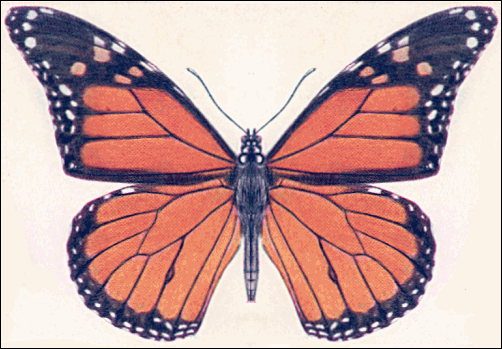

You've all heard that you are what you eat. Though arguable in general, there are situations in what is eaten plays a big role in survival—and we're not talking calories. Some creatures have evolved the ability to flourish while dining on obnoxious or poisonous foods. Perhaps most familiar to North Americans is the Monarch Butterfly who, feeding on milkweed as caterpillars, takes in the bitter milkweed alkaloids. These chemicals remain in the body even after metamorphosis; a predator of butterflies quickly learns a powerful lesson about the suitability of Monarchs as food.
Two kinds of New Guinean birds are now known to be poisonous, but not
from manufacturing their own poisons. Instead, feeding on a specific kind of beetle
apparently allows them to purloin a nerve toxin. batrachotoxin, that is some 250 times
as poisonous as strychnine. Incorporated into the skin and feathers, the toxin offers
protection from predators, even humans. Now, while we don't think there are any
poisonous birds in the Chihuahuan Desert, I do feel duty bound to ask you to please
don't eat the butterflies.

Contributor: Arthur H. Harris, Laboratory for Environmental Biology, Centennial Museum, University of Texas at El Paso.
Desert Diary is a joint production of the Centennial Museum and KTEP National Public Radio at the University of Texas at El Paso.

Monarch Butterfly. Adapted from Lutz (1921).